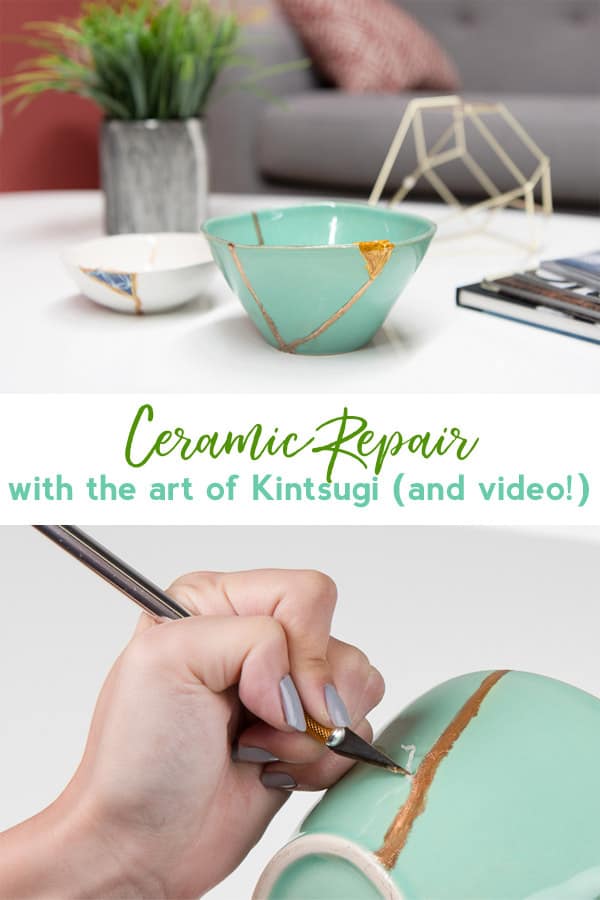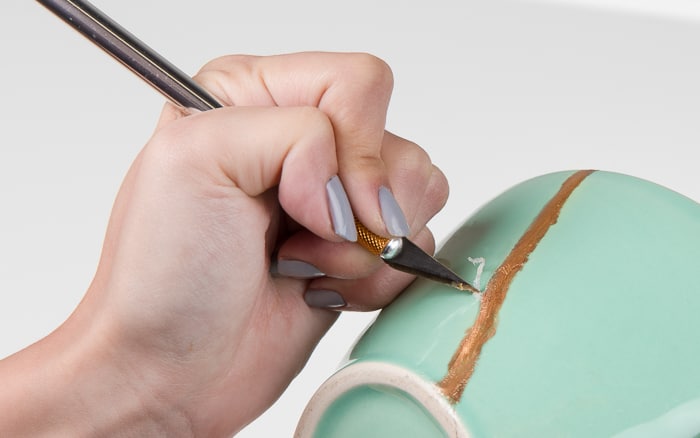Sharing an easy ceramic repair idea using the ancient art of Kintsugi! Grab your broken ceramic and glass items, and make them beautiful again!
Almost everyone can understand the frustration that comes with breaking or cracking your favorite decorative household item. But instead of tossing it, consider making something new that will exude the same type of beauty as your original piece.
This can be done with the practice of Kintsugi, an old Japanese art that enables you to revive shattered glass and antiques to create something beautifully innovative. Kintsugi dates back to the 15th century.
Legend has it, shogun Ashikaga Yoshimasa broke his favorite chawan (a chinese ceramic tea bowl) and sent it back to China for repair, only to be disappointed when it was returned bound by ugly metal.
This inspired him to find a more refined way to fix artwork, and the practice of Kintsugi was born!
Kintsugi literally translates into golden repair. “Kin” means golden and “tsugi” translates to joinery. It derives from the Zen ideal of Wabi sabi, embracing imperfection. The art practice highlights scars and cracks, emphasizing their beauty and making them the focal point of your new project.
Originally, this ceramic repair practice used urushi lacquer and rice flour to bind the pieces together, but the DIY and crafting world has since revived in a manner that’s much more cost-effective. Now, Kintsugi is all over the internet and is a fun project to do by yourself or with friends.
Curious to see how it works? This video tutorial from Invaluable goes into detail about how to master and modernize the practice of Kintsugi. All you need is a few accessible materials and about a half hour of your time (unless you’re a perfectionist and might need a bit more!).
By the time you’re finished, you’ll have something truly exquisite and new! And if you don’t have a broken object to start off with, you can always try cracking something yourself. Simply place it in a paper bag and tap lightly with a hammer. Make sure to remove it carefully!
Make sure you picked something that is decorative rather than used for consumption. The epoxy resin can be toxic if consumed.
Get creative! This is a great method to use for decorative bowls, flower vases, old antique plates, and other household items. Once you’ve chosen your object, you’re ready to begin!
Start by determining your Kintsugi method: The Crack Method, Makienaoshi Method, or Joint Method (the most common being Crack Method).
Then, prepare your adhesive, glue your ceramics together, and create your gold lines by filling in the cracks with golden powder or liquid gold leaf. Be sure to use an exacto knife to scrape off the thick layer of resin for a more delicate, subtle look.
When you’re finished and like the way it turned out, make sure to wait two days for everything to dry and completely set before using. You’ll be amazed by how beautiful it turns out!
Display your new Kintsugi art piece in your home, workplace, yoga studio, and more.
For a more detailed, visual representation on how to create your new Kintsugi design, you can watch this step-by-step video!
Thanks for reading all about Ceramic Repair and the Art of Kintsugi {Plus a Video}! Have a lovely day!




